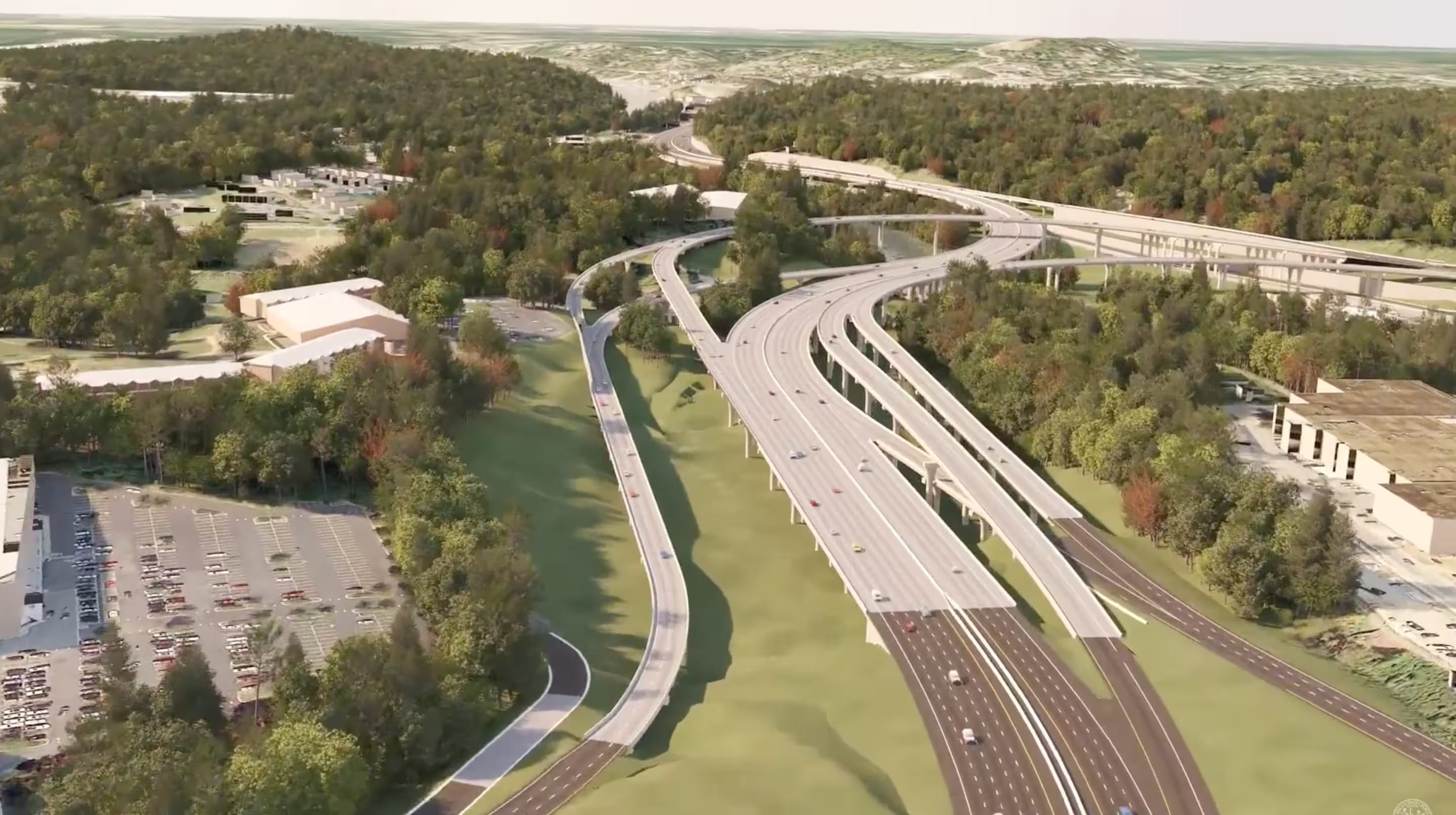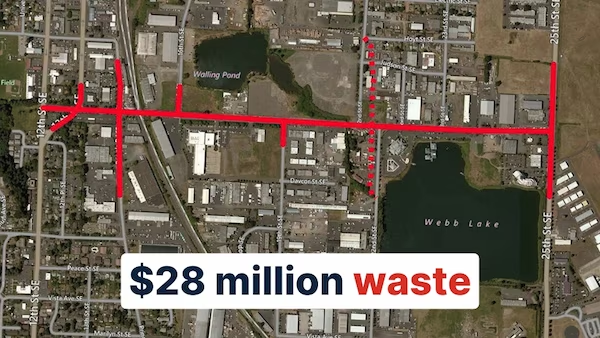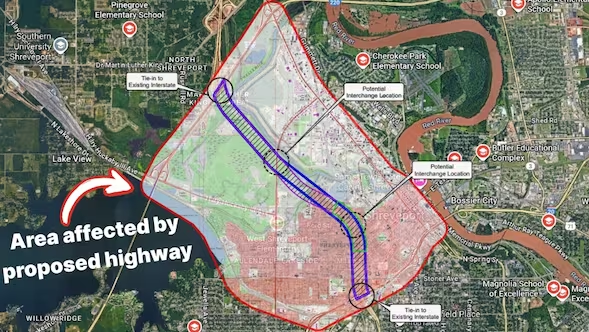Editor's Note: The challenges our cities face are growing, but so is the strength of this movement. Every story we share, every idea we spread, and every tool we build exists because people like you are committed to showing up. Your membership isn’t passive—it’s the momentum that makes change possible.
After decades of planning, the North Carolina Department of Transportation (NCDOT) is moving forward with a $1.8 billion overhaul of Interstate 26 through the city of Asheville. The project stretches seven miles and includes a variety of DOT staples: adding lanes, building completely new sections of highway, and cutting through the center of the city.
Projects like this are often justified as necessary investments to improve mobility and encourage economic growth. These goals are particularly relevant for Asheville, which is still struggling to recover from the major flood damage it suffered during Hurricane Helene in September 2024.
However, highway expansion projects often do far more harm than good. They decrease land values, make streets more dangerous, and worsen congestion. Still, after years of negotiation and public input, Asheville locals were ready to accept the proposed changes—until a crucial part of the plan was changed behind closed doors.
Back in 2018, city leaders and residents agreed to a plan that would route the interstate under Patton Avenue, a street that runs through the heart of the city. The goal was to reclaim the corridor, turning it into a space for locals. But during the construction bidding process, NCDOT quietly abandoned the agreed-upon design in favor of an eight-lane overpass. The public wasn’t informed of the change until February 2025—more than a year and a half after it was approved. A public meeting on the new design wasn’t held until the end of April.
NCDOT says it couldn't publicize the change earlier due to confidentiality requirements in the negotiating process. That isn't flying with locals. “The whole idea with Patton Avenue was to return it to local traffic, and it to be sort of a boulevard… That’s hard to do when it has a giant overpass going over it,” Mayor Esther Manheimer told Asheville Watchdog.
Despite the protests of locals, Department officials have made it clear that they don’t plan to revisit the decision. "Honestly, at this point, I don’t think there’s anything that’s going to make us change our mind," NCDOT’s deputy director of technical services told residents, as reported by Asheville Watchdog.
Project engineer Nathan Moneyham echoed the same stance to Blue Ridge Public Radio: “Any significant change... [would] really jeopardize where we are in the standpoint now, which is a fully funded project that we can move forward with.”
This illustrates a problem that goes far deeper than a single overpass: State transportation departments are working within a system that prioritizes project completion over project value. When you combine that with a toolbox limited to expansion projects, state officials who genuinely want to help communities can end up hurting them instead.
This pattern repeats across North America, from Pennsylvania and West Virginia to Texas and Alaska. In the case of Asheville, the overpass promises faster construction, cheaper delivery, and less friction. That makes it the obvious—and supposedly most beneficial—choice for NCDOT, even if it means ignoring the community’s actual needs.
But it doesn’t have to be that way.
“There are numerous examples of cost-cutting that can happen that will make it [the project] faster, cheaper and meet our community goals,” said urban planner Joe Minicozzi, who is a resident of Asheville and principal of the geoanalytics firm Urban3.
To prove it, Minicozzi put on a weekend design charette following the public meeting, where participants brainstormed alternative designs that would make the original underpass viable. According to Elaine Bearden, one of the charette participants, it was well attended by residents and local officials. “The larger interest group met first on Friday evening to get the big picture, using NCDOT-supplied current-state design plans,” Bearden explained in an email to Strong Towns. “Over the weekend, smaller working groups presented local solutions prepared on behalf of all those affected.”
These alternatives weren’t just about better design—they were about better priorities. Charette participants considered how their alternative designs might increase walkability and help Asheville recover from Hurricane Helene. The city is trying to rebuild its economy and restore the things that drew people to the area in the first place: its natural beauty, outdoor tourism, and local businesses. After such a devastating natural disaster, every public dollar counts even more—and every decision should reflect the needs of the people who live there.
The citizen-led charette in Asheville provides a glimpse of a better transportation model—one where residents and local officials work together to define what success looks like, and state DOTs respond with the right tools for the job. That kind of shift won’t come from doubling down on the same old toolbox. It will take humility, experimentation, and a willingness to stop measuring success by what gets built—and start measuring it by who is helped.
If you’re a local or state official who’s facing a similar challenge, Strong Towns is here to help. Get in touch with us here, or sign up for the next Accelerator coaching course, beginning September 15.


.webp)


